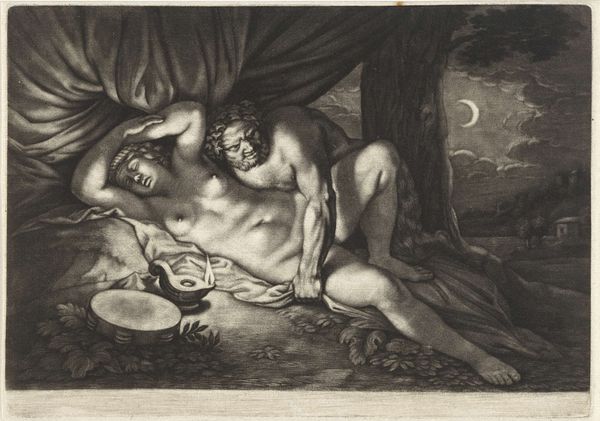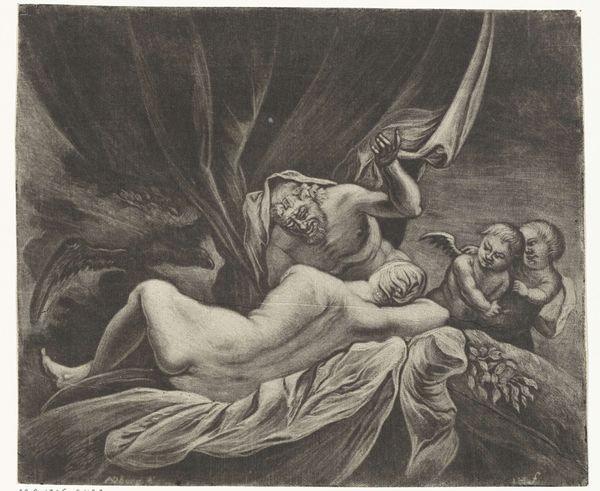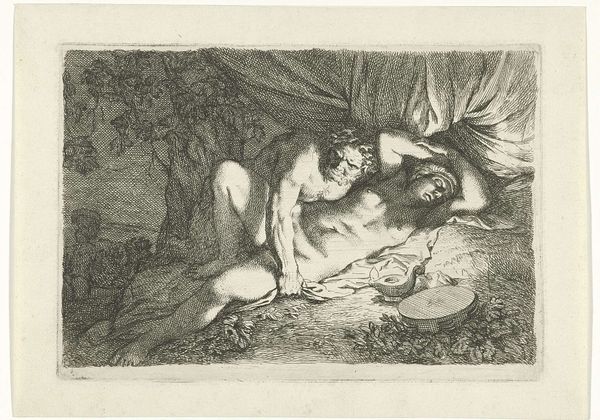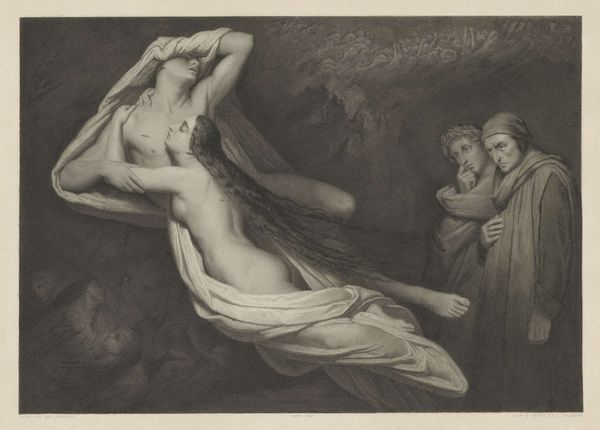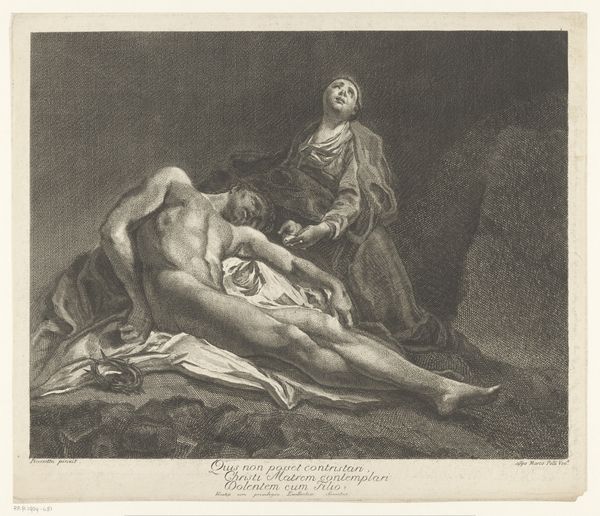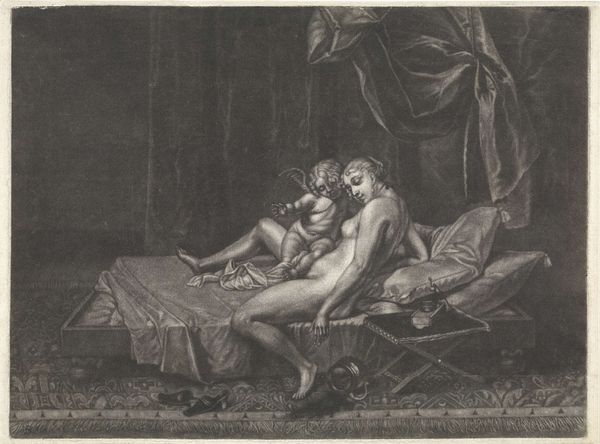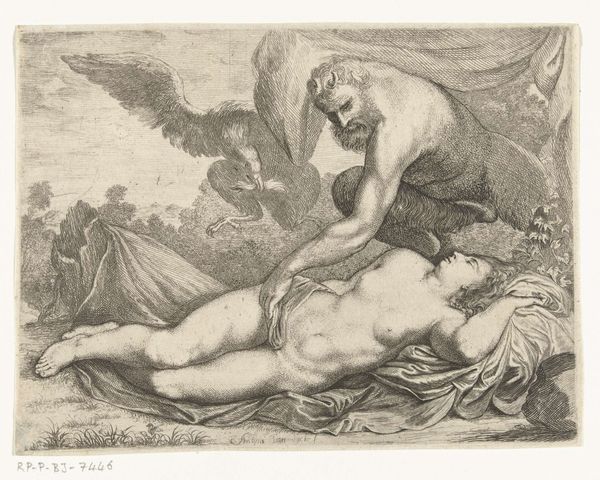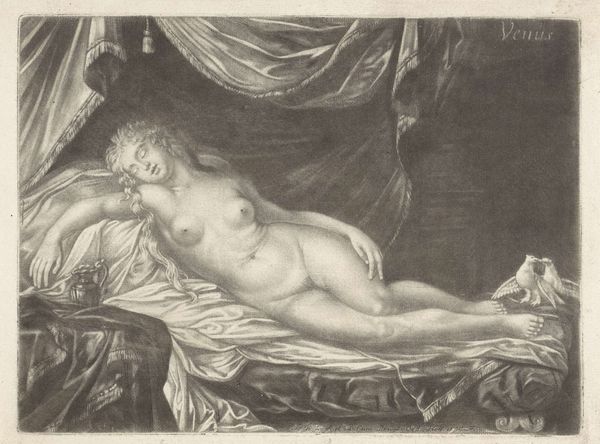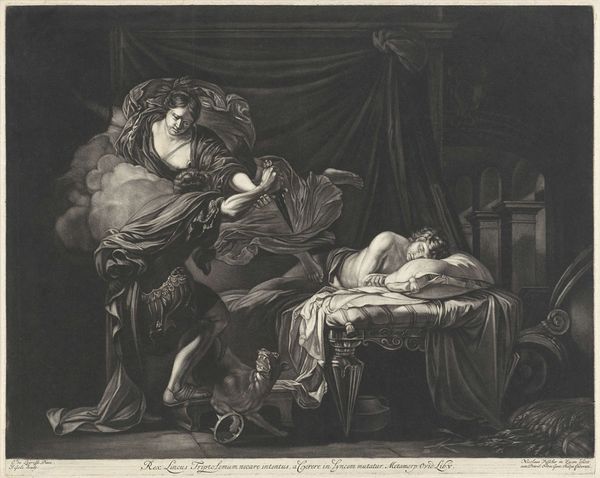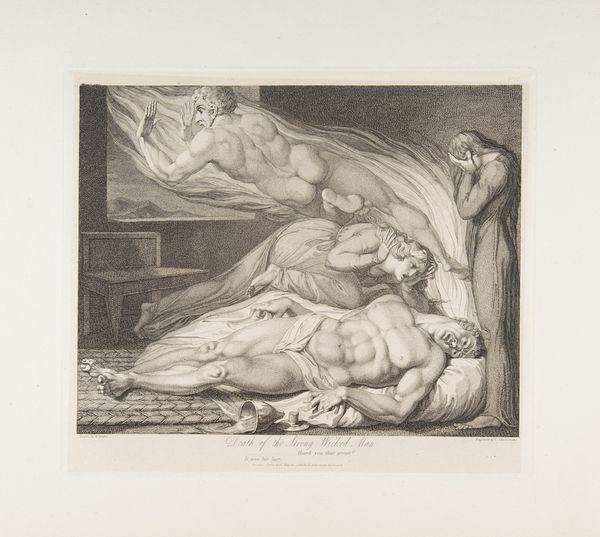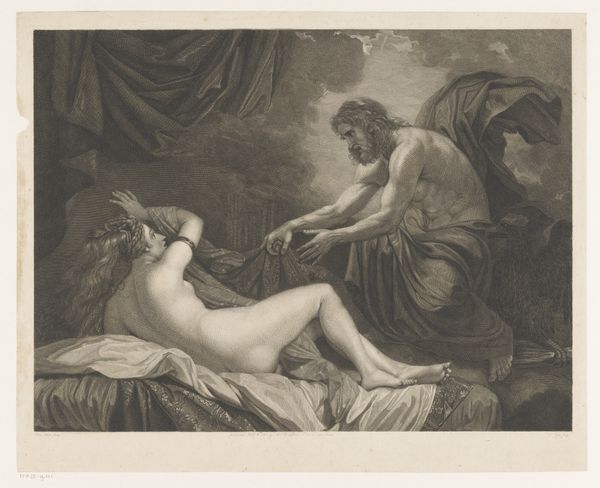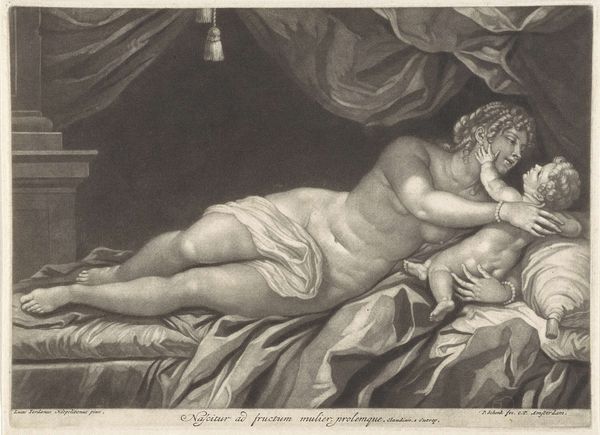
drawing, charcoal
#
drawing
#
baroque
#
charcoal drawing
#
charcoal art
#
framed image
#
genre-painting
#
charcoal
#
charcoal
#
nude
Dimensions: height 182 mm, width 249 mm
Copyright: Rijks Museum: Open Domain
Curator: Looking at this charcoal drawing titled "Satyr Spying on a Sleeping Nymph," made by Caspar Netscher somewhere between 1649 and 1684, currently residing here at the Rijksmuseum. Editor: Right away, I'm struck by the contrast. There’s this incredible softness in the nymph's form, almost luminous, then this dark, lurking presence in the background. Gives me the chills. Curator: It certainly captures the dramatic flair of the Baroque era. The voyeuristic theme plays into larger trends around how female subjects were constructed and viewed within artistic and social circles during this period. The satyr becomes an embodiment of those prevailing views. Editor: Oh, totally. There's that old-school objectification humming beneath the surface. It is gorgeous work technically though, right? I love how Netscher used the charcoal to suggest shadow, and movement. See how he drapes that cloth? It hints, but it doesn't reveal entirely. Very sly. Curator: His skillful manipulation of charcoal aligns with the artistic trends in the Dutch Golden Age where artists experimented with chiaroscuro to evoke moral lessons, engage with contemporary philosophical issues or show off, and demonstrate technical virtuosity to attract affluent patrons. Editor: Patrons wanting to leer discreetly, perhaps? It makes you wonder about the original commission and the world it was destined for. But forgetting that darkness, for a second, that sleeping nymph… the drawing gives her such serenity. It's like she is cocooned in a dream. I am getting conflicting vibes looking at the peace versus the predatory gaze thing happening! Curator: That push and pull you feel may stem from shifting aesthetic values that begin emerging late into the Baroque and what will mark later the ascendance of the Rococo – playful subjects but still framed by didactic approaches related to power, gender and the gaze. Editor: Well, it certainly leaves an impression, doesn’t it? I walk away with more questions than answers, I guess. I think that the unease makes it unforgettable, ultimately. Curator: A testament to Netscher’s skills, managing to stir us even centuries later with some powdered charcoal, I suppose.
Comments
No comments
Be the first to comment and join the conversation on the ultimate creative platform.
